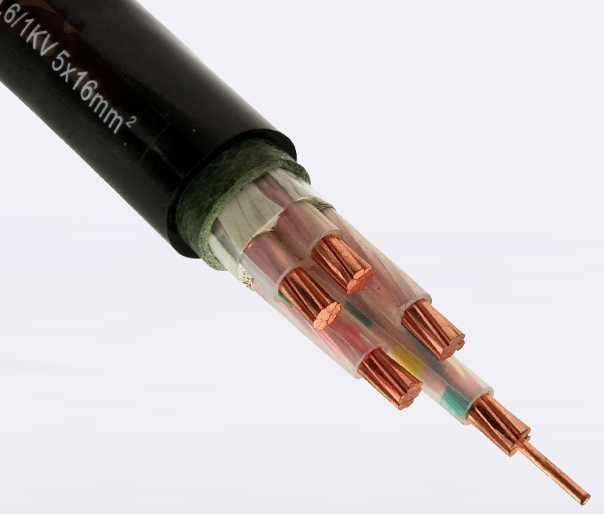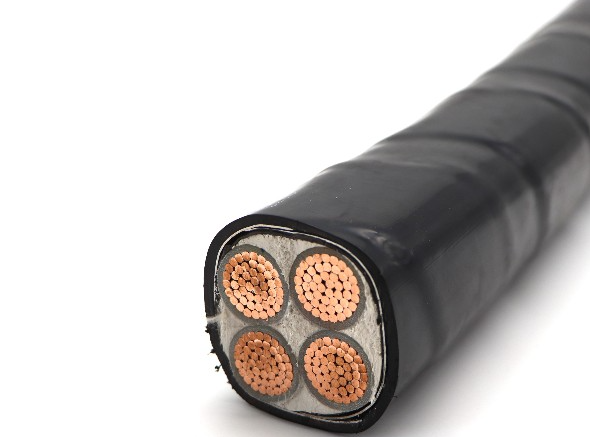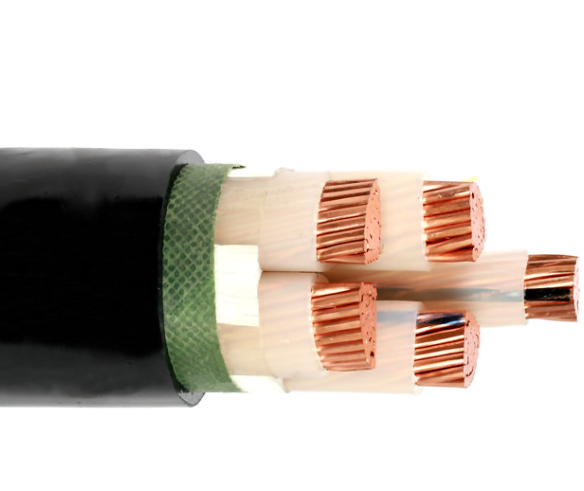In the AC system, the rated voltage between phases of the conductor of the power cable shall not be lower than the voltage of the working line of the usual circuit. The low-voltage power cable should be insulated with cross linked polyethylene or polyvinyl chloride.
In general, YJV-0.6/1KV - is selected
Choosing according to the cable environment and equipment characteristics.
- Flame retardant power cable: ZR-YJV-0.6/1kV-
- Fire-resistant power cable: NH-YJV-0.6/1kV-
- Rubber sleeve power cable: YC-450/750V-
- Flame retardant rubber sleeve power cable: ZR-YC-450/750V-

The section of low-voltage power cable can be divided into the following four types according to the technical method:
The allowable carrying capacity of the cable under the long-term continuous rated load should not be lower than the maximum calculated current value of the electrical load to ensure that the allowable temperature rise range of the cable. If the section is weak, the allowable load is less than the load current, the temperature rise will exceed the allowable value, accelerate the aging of insulation materials, reduce the insulation degree of wire, affect the safety of electricity.
On the contrary, the cable section is larger, will increase the cost of the project, resulting in the waste of materials and funds. Take long-term working three-phase power equipment, such as water pumps, fans, etc., for example.
Firstly, the calculated load is determined. If there is a single device, the calculated load is the rated capacity; if there are several devices, the calculated load is the sum of all rated capacities and multiplied by the simultaneous use coefficient Ke, i.e., Pj=P, total Ke
The calculation current is determined by calculating the load: Ij=Pj√3?×Utah φ where Ue is the line voltage and COS φ is the power factor of the distribution system.
The traverse section is determined according to the cable laying mode and operating conditions, and the cable section is determined by querying the table and corresponding parameters in the table of "allowable current carrying capacity when 1~3KV cross linked polyethylene insulated cable is directly buried and laid".
When verifying the cross section according to voltage loss, all kinds of electrical equipment should be done to work normally and the terminal voltage when starting to meet the requirements.
Loss voltage: △U= UE-UI
Where Ue is the rated voltage and Ui is the terminal voltage of the device.
Cable cross-sectional area: S=PjxL×△U%/C
Where S traverse section, unit mm2 : Pj is calculation capacity, unit kW: L is line length, unit m; △U% is the percentage of voltage loss, generally 5%; C is the internal coefficient of the material, 77 for copper and 46.3 for aluminum.
Depending on the calculation results, according to the cable section series, select the wire.
When the low-voltage distribution line has a short-circuit fault, the conductor temperature will rise sharply due to the thermal effect of short-circuit current before the protection of electrical appliances, which will lead to the damage of conductor insulation.
According to the provision of Article 3.2.2 3 of the Code for Low-voltage Distribution Design (GB 50054-2011), the conductor section shall be selected, and the conductor shall meet the requirements of dynamic and thermal stability. The thermal stability of the insulated conductor shall be checked according to its cross-sectional area.

When the short circuit duration is less than or equal to 5S, the cross-sectional area of the insulated conductor must comply with the calculation formula of this specification. When the short circuit duration is less than 0.1s, the cross-sectional area of the insulated conductor should be regarded as the influence of the aperiodic component of the short circuit current. If the short circuit duration is longer than 5 seconds, the cross-sectional area of the insulation conductor must be accounted for the heat dissipation.
The lead wire should be enough to withstand normal tension and electric force, should not produce diameter reduction, fracture and other phenomena. In order to ensure the safe transmission of electric energy. The mechanical strength is closely related to the way of cable laying, such as multiple parallel laying in the air, underground directly buried laying, pipe laying, overhead laying, line groove playing, cable trench laying, cable tunnel laying, etc.
Different playing modes will affect the allowable carrying capacity of the wire. Mechanical damage caused by turning off power cables should also be paid attention to. During construction, if the turning Angle is too large, the conductor may be affected by mechanical damage, which may decrease the insulation degree of the cable and cause faults.
When the cable is turned or reserved, the cable should be naturally bent as much as possible to minimize the torsion force and internal mechanical damage.
In addition, in engineering practice, it is easy to ignore the temperature, blister, interference, corrosion and other adverse factors, which may lead to the occurrence of accidents or failure.
The so-called economic current is "the operating current corresponding to the applicable cross section that minimizes the sum of the investment and conductor loss cost during the life period". When selecting core section according to the technical method, only initial investment is generally considered.
When choosing the core section according to the current economic method, in addition to the initial investment of the computer, the conductor loss cost during the economic life period should also be considered, and the minimum sum of the two should be selected.
When the core section is reduced, the initial investment is reduced, but the line loss cost is increased. On the contrary, when the core section is increased, the line loss is decreased, but the initial investment is increased. And in a certain section of the range, the total cost is the least, this is our pursuit of the goal - efficient selection.
The total cost CT=CI+CJ, where CI is the sum of cable main material, accessory cost and construction cost, and CJ is the loss cost, which is related to load (current), cable resistance (section), annual operation time, electricity price, service life and other factors. Among them, it should be noted that:
When choosing core section, technology and economy are two aspects of one thing, interdependent and mutually restricted.
Because the core section of the cable is not continuous, the economic section and economic current have a definite range.
In the range of the economic section, can be selected by the smaller section.
The cable section of the spare circuit, such as the auxiliary motor circuit, should be selected according to half of the normal operating hours. For some circuits not used for a long time, it is not apt to choose the cross section according to the economic current.
According to the economic selection to determine the cable section, in order to ensure the reliability of electric power operation, but also can save energy, economically save costs, obtain the best economic benefits.
According to experience, choose the power cable, electrical design is often to determine the cable type according to installation conditions, and then according to the hot conditions to select the suitable for the current carrying capacity demands and meet the voltage loss and thermal stability of the cable, at the same time we should also check the voltage loss and mechanical strength, it is to use a more extensive way.

The cable section selected in this way is technically reliable. In line with large consumption of non-ferrous metal, it is advisable to select the cross section according to the economic current density in order to save non-ferrous metal and investment.
In theory, no matter choose according to what kind of method of cable section, should be according to the engineering condition, environmental characteristics, cable type and the number of factors, from the view of development, using other methods to check, according to a variety of methods to find the minimum cross-sectional area respectively, and then choose the maximum value as the final selected values, enables the cable selection to meet the requirements at the same time.
In this approach, the possibility of load development can be fully considered, and the voltage quality and work efficiency of electrical equipment can be improved, so as to prolong the service life of the cable.